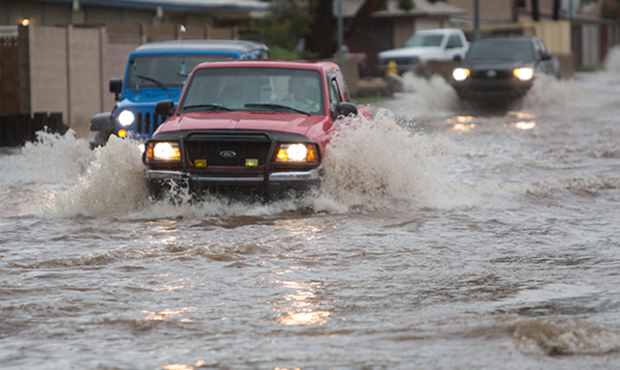How much snow is too much for your roof to handle? Here’s a guidance of understanding what it may hold and some tips on what to do if you are in the danger zone.
- Melting snow tends to more quickly run off of steep sloped roofs with slopes greater than 3 in. of slope in 12 in. of horizontal distance, particularly the steeper ones that are typically found on houses in northern climates.
- Ice and snow tend to more readily accumulate on low slope and flat roofs over porches, lanais or parts of a home that are next to a taller section of the house, especially during high winds.
Estimate how much weight your roof can support
- Unless the roof structure is damaged or decayed, most residential roofs regardless of the location of the house should be able to support 20 lbs per square foot of snow before they become stressed.
- In some areas of New England and in mountainous areas throughout the United States, snow loads used in home design may be considerably higher and the roofs may be able to resist a greater depth of snow.
- If you live in an area known for lots of snow, you can probably check with your building department to find out if higher loads were used at the time your home was built.
Estimate how much the snow on your roof weighs using these guidelines from IBHS:
Fresh snow: 10-12 in. of new snow is equal to one in. of water, or about 5 lbs per square foot of roof space, so you could have up to 4 ft. of new snow before the roof will become stressed.
Packed snow: 3-5 in. of old snow is equal to one inch of water, or about 5 lbs per square foot of roof space, so anything more than 2 ft. of old snow could be too much for your roof to handle.
Total accumulated weight: two ft. of old snow and two ft. of new snow could weigh as much as 60 lbs per square foot of roof space, which is beyond the typical snow load capacity of most roofs.
Ice: one in. of ice equals one ft. of fresh snow.
Snow removal may be necessary to avoid roof collapse
If you are in the “danger zone” according to chart above or if the loads you estimate based on the thickness of the various types of snow and ice exceed 20-25 psf, you should consider removing snow from your roof.
For safe removal that won’t endanger you or damage your roof, use a snow rake with a long extension arm that will allow you to remove the snow while standing on the ground or hire a snow removal contractor.
Visit our website, or join our newsletter at biowashing.com








